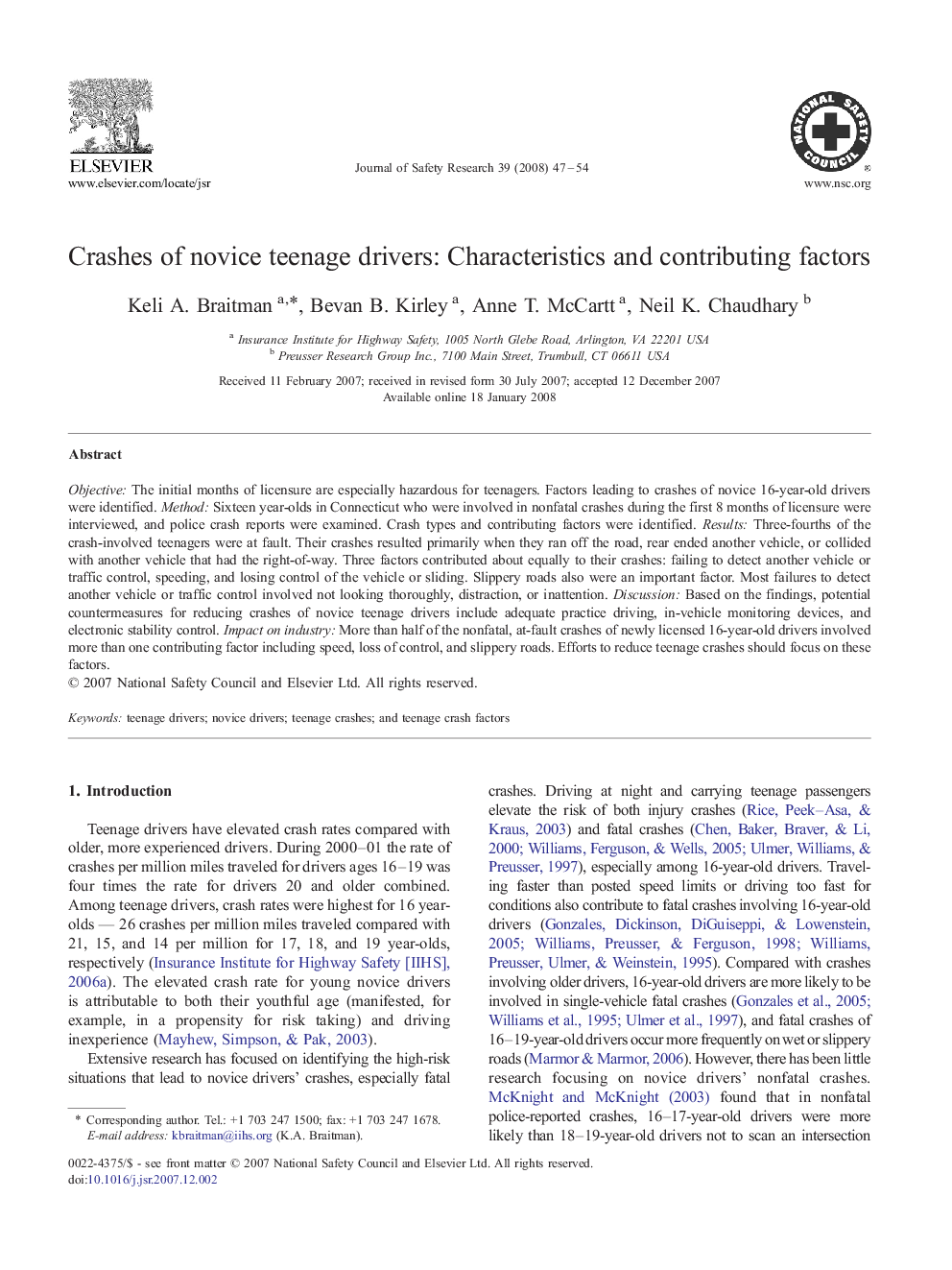| Article ID | Journal | Published Year | Pages | File Type |
|---|---|---|---|---|
| 587909 | Journal of Safety Research | 2008 | 8 Pages |
Objective: The initial months of licensure are especially hazardous for teenagers. Factors leading to crashes of novice 16-year-old drivers were identified. Method: Sixteen year-olds in Connecticut who were involved in nonfatal crashes during the first 8 months of licensure were interviewed, and police crash reports were examined. Crash types and contributing factors were identified. Results: Three-fourths of the crash-involved teenagers were at fault. Their crashes resulted primarily when they ran off the road, rear ended another vehicle, or collided with another vehicle that had the right-of-way. Three factors contributed about equally to their crashes: failing to detect another vehicle or traffic control, speeding, and losing control of the vehicle or sliding. Slippery roads also were an important factor. Most failures to detect another vehicle or traffic control involved not looking thoroughly, distraction, or inattention. Discussion: Based on the findings, potential countermeasures for reducing crashes of novice teenage drivers include adequate practice driving, in-vehicle monitoring devices, and electronic stability control. Impact on industry: More than half of the nonfatal, at-fault crashes of newly licensed 16-year-old drivers involved more than one contributing factor including speed, loss of control, and slippery roads. Efforts to reduce teenage crashes should focus on these factors.
